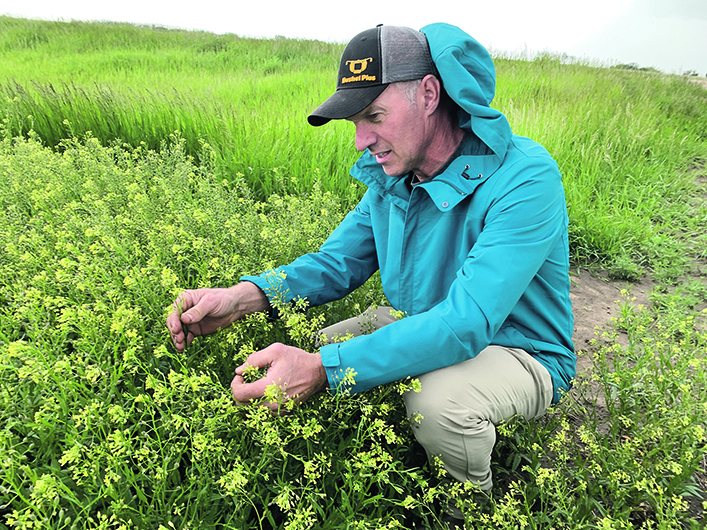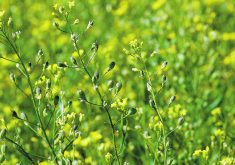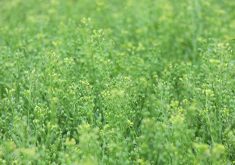The crop is very competitive and gets ahead of the weeds in the spring, even on land where canola crops struggle
SASKATOON — It’s hard to miss Darcy Friesen’s farm when you’re approaching it from the south. On a mid-June day, his brilliant green, knee-high camelina crop is about to bloom and dwarfs everything else nearby, and so it should.
Friesen planted the crop last fall.
“I grew some spring camelina a couple years ago, I saw it on an Instagram advertisement,” Friesen recalled.
“They were putting it up against canola — a cheaper crop to grow, with less inputs on poorer land — so I’ve got some of that, and I was willing to take the risk and try it.”
Read Also

U.S. bill could keep out Canadian truckers
The Protecting America’s Roads Act, which was tabled in the U.S. House of Representatives at the beginning of October, would “rid the country of illegal immigrant commercial truck drivers and ineligible foreign nationals.”
Friesen farms 3,200 acres with his wife, Marilyn, southeast of Langham, Sask.
“She’s a 50-50 partner in this,” Friesen notes.
“She’s an operator. We do everything together.”
The spring camelina Friesen grew came from the Saskatoon-based Smart Earth Camelina Corp.
The crop germinated well in a dry year, which got Friesen thinking. At the end of the day, would canola do any better on this land? It was a poor piece of land on which he always struggled to get a good canola crop.
Friesen’s thoughts turned to the winter camelina variety offered by Smart Earth, even though he’d never grown a winter crop before.
“Maybe a winter crop, if I can get a catch, I’ll try it,” he said.
“I was pretty sure I’d be happy with some kind of yield off it, but I didn’t know what to expect.”
Part of the calculation in making his decision to try a winter crop were a number of benefits the crop offers.
For one, the input costs were a lot less than a comparable oilseed such as canola. Also, a winter crop was going to spread out Friesen’s seeding operation, and the head start a winter-seeded crop might have may help with weed control.
One downside Friesen noted is that the crop does require more — in this case three total — field operations, including tillage, which made him a little nervous due to his light soil.
However, his first winter crop seems to have worked out well.

“As you can see (at Friesen’s farm), the crop is very competitive with spring annual weeds,” said Carlene Sarvas, project lead with Smart Earth Camelina Corp., the developers of this winter camelina variety.
“It gets out in front of everything, choking everything else out.”
Sarvas said little winter camelina is grown in Western Canada, but the preliminary results have been promising.
“We’re definitely looking to expand the number of winter camelina acres being grown, hopefully to an equal amount of winter acres going in as spring,” said Sarvas.
“Our breeding program has been working on winter camelina for about five years now, and we’re trying to push some of our spring traits into the winter varieties to give farmers an even better winter variety.”
Sarvas said winter production of camelina has been spread around the province, from Carnduff in the south to the Balgonie, Foam Lake and Saskatoon areas further north.
“Many companies have tried to get winter canola going, but it just didn’t have the hardiness for our winter,” Sarvas said.
“To actually have a winter oilseed that can handle our winters … it’s just kind of a game changer, I think.”
Friesen seeded 175 acres of the crop on Sept. 20, 2023, and he figures he should be able to harvest it at the end of July.
“Just before freeze-up we were starting to see the odd plant, but in the fall I did not know if I’d have a crop in the spring…. I didn’t think it would make it,” said Friesen.
“It took off so quick this spring, when I was in the crop looking for any weeds I found it very clean.
“I’m really happy with it.”

















